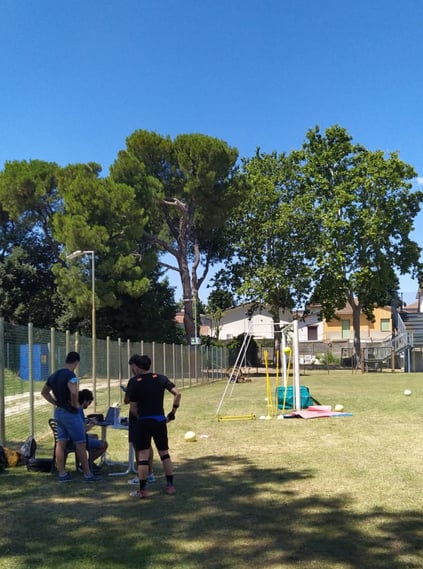The University of Bologna has taken its motion analysis capabilities to the next level with Xsens’ brand new automated MVN Reports. Already, long-time users of Xsens’ motion capture technology, the university has now integrated comprehensive gait analysis faster and with an even greater level of accuracy than before.
Stefano Di Paolo, a Biomechanical Engineer, Ph.D. student, and research assistant at the University of Bologna works hands-on with the MVN Analyze system and the new MVN reports, producing gait reports for lower limb injuries in athletes and elderly people. We spoke with Stefano to find out how this new feature has leveled up his lab’s capabilities.
Clear and accurate feedback
Stefano works within the Department for Life Quality Studies, a research lab at Rizzoli Orthopedic Institute housing a multidisciplinary team of orthopedic surgeons, kinesiologists, biomechanical engineers, and mechanical engineers (group heads Professor Stefano Zaffagnini and Professor Laura Bragonzoni). The lab takes a multifaceted approach to its research, tapping into cutting-edge technology to continually improve its capabilities. It was for this reason that Stefano and the team chose to implement the MVN Analyze system more than three years ago.
“Our studies take place in multiple environments,” stated Stefano, adding, “to ensure the utmost accuracy, we conduct our biomechanical analysis inside a hospital and outside, such as a sports field. We needed sensors that were unobstructed and easy to wear in such different contexts and for a wide range of ages and activity levels.”


The research lab conducts a complete clinical and functional inspection, including gait analysis, on patients both pre and post-operation for lower limb injuries. Using the automatic Gait Analysis Report, Stefano can obtain precise biomechanical data presented accurately. Alongside specific parameters and graphs, there is also a digital recording of an avatar completing the movements performed by the patient for reference.
This boosts Stefano’s possibilities to share clear feedback instantly with surgeons and physicians, and kinesiologists without needing to spend prior time completing an analysis.
“We now have an opportunity to inspect all of the relevant kinematic variables available in the Gait Analysis Report. When I complete a gait analysis, I only use automatic reporting – it’s complete, for both the general understanding and a deeper analysis of the subject,” explained Stefano.
Injuries requiring an operation, such as knee cruciate ligaments or ankle prosthesis, can be analyzed fully – this provides the surgeon or physician with enough detail to understand the condition of the patient properly. A post-operation analysis is then conducted to map out a safe return to normal physical activity.
Accessible data at speed
Improving the level of the feedback given to surgeons is just one of the key benefits offered by MVN reporting – Stefano and his team can also greatly enhance the feedback and communication given to patients.
The Gait Analysis Report is presented in a clear and easy-to-read format designed to make access simple for researchers and physical health practitioners.
 “There should always be a positive interaction with the patient while giving feedback – it’s important the patient understands the needs for each specification. For example, a curve on a graph means something for me as a technician and something else for the patient. The Gait Analysis Report’s visual interactions are great for this,” said Stefano.
“There should always be a positive interaction with the patient while giving feedback – it’s important the patient understands the needs for each specification. For example, a curve on a graph means something for me as a technician and something else for the patient. The Gait Analysis Report’s visual interactions are great for this,” said Stefano.
Stefano’s Ph.D. research is on injury prevention and the return to sport, ensuring that the rehabilitation process is safe and measured. Xsens’ sensors can work anywhere, making them ideal for full-body motion tracking in sport-specific environments. All of the information gained from the biomechanical analysis significantly limits the risk of re-injury.
The future
Stefano sees automated data analysis as a technology that will become standardized in his profession – even at the biggest research facilities. With data presented in a format that allows instant use, interactivity, and feedback, the automated feature covers all of the primary bases needed to complete a full gait analysis.
“One of the most important qualities is the simple way users can interact with the software. It can be used at multiple levels; technical and research purposes on one side, and on the other, direct contact and direct feedback with clinicians and patients as well,” explained Stefano.
Discover automated reporting and increase both the speed and accuracy of your research and physical health analysis today – find out more here.